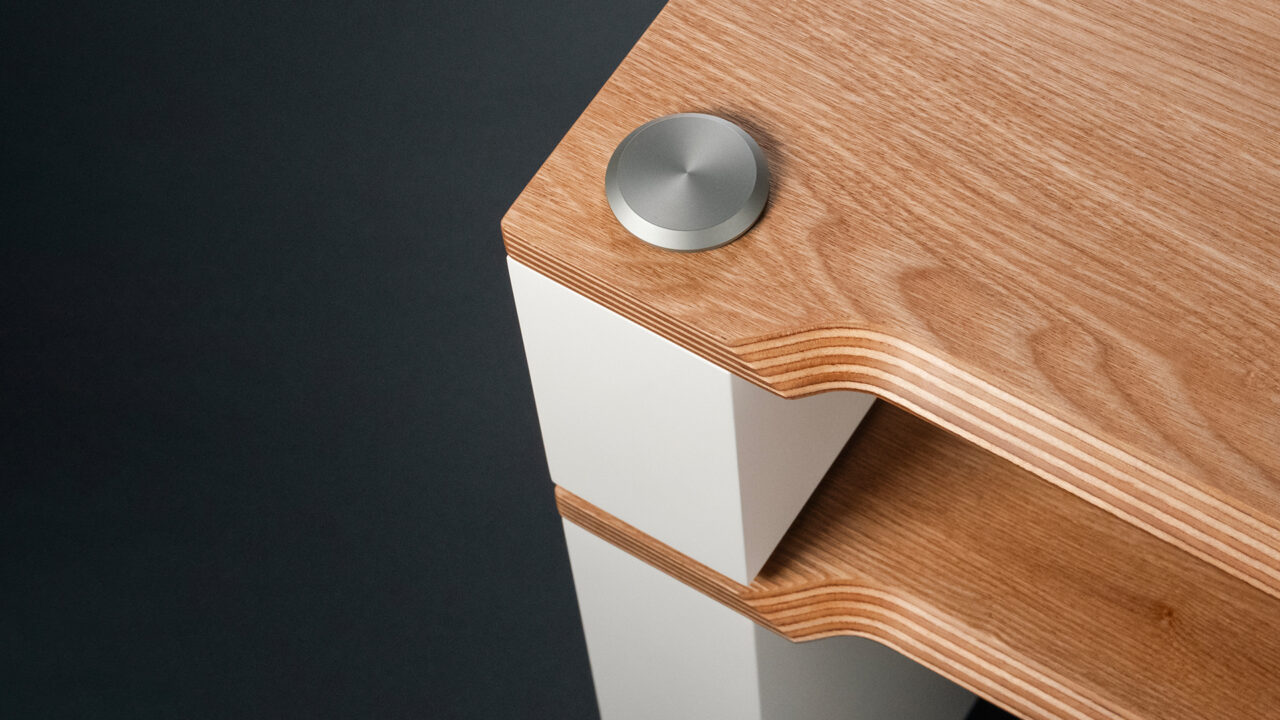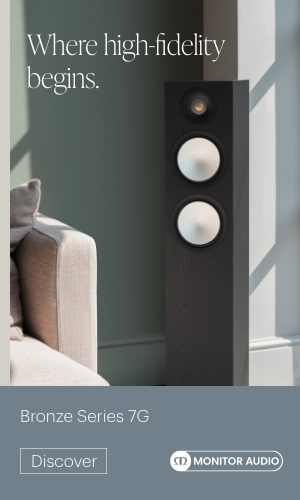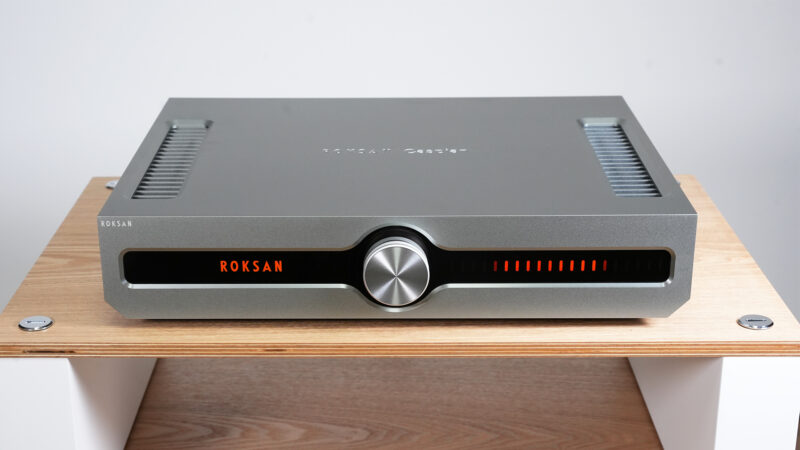There was a time when the term ‘hifi equipment support’ conjured images of industrially welded units that looked at ill at ease sat in our homes.
But thankfully times have changed and, dare I say it, the f-word is now much more welcomed in this part of the hifi market. That’s right, the modern trend for hifi ‘furniture’ that complements, rather than contrasts our domestic dwellings, means our equipment stands can be just as visually appealing as they are sonically beneficial, with manufacturers majoring on style alongside audio substance.
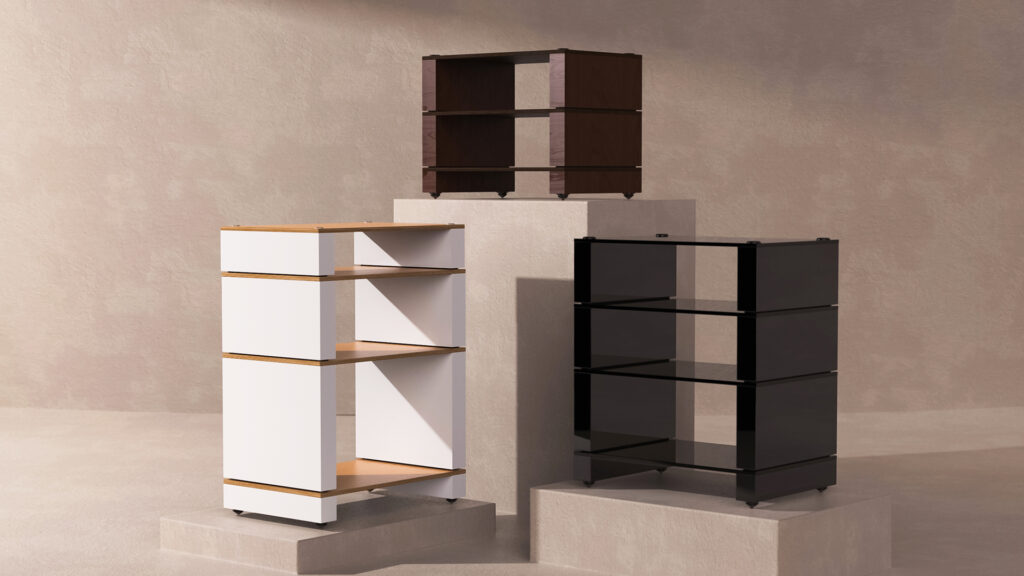
Blok Stax 2G comes in a range of finishes and materials, with white, natural wood or black ash and gloss black finished veneers plus plywood or tempered glass shelves
The Blok Stax 2G offerings first caught our eye doing the rounds on this year’s hifi show circuit, standing out for their chunky build and sleek finish that’s easy on the eye, without screaming for attention. And that’s because Blok is part of the Monitor Audio Group, which also owns Roksan, meaning unlike many equipment supports, these are built by a company that also makes the gear that will sit on them, so designing one to best suit the needs of the other is much more of a given.
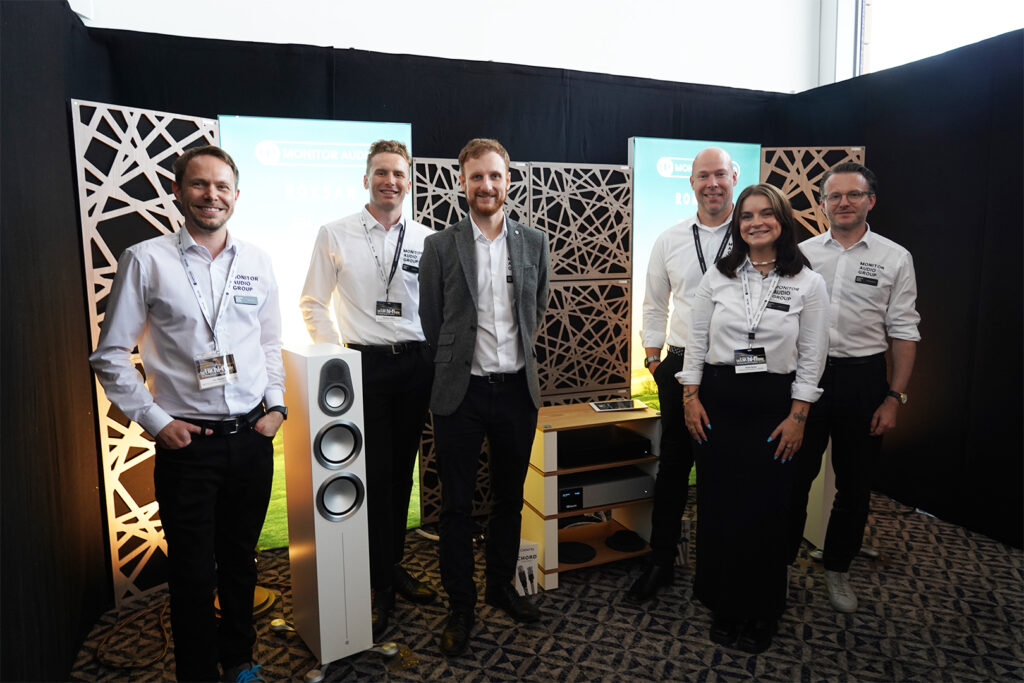
Monitor Audio heavies closely guarding the Stax 2G at this year’s Hi-Fi Show Live
Stack em up
Like the name implies, what the Stax 2G offers is versatility, via a practical stacking system. Because despite having the appearance of a fixed unit, each shelf, or ‘tier’ is separate, meaning you can specify how many tiers you need and at what height from the off, to tailor your stand to your system. And as your system grows, so can your Stax 2G, as you can simply buy more tiers (up to a max of 1,100mm high is Blok’s recommendation).
Each Stax 2G system is built around either tempered glass or 12mm plywood shelves, with 60mm thick side supports. These vary in height, with 120/170/220mm heights available plus an ‘LP’ variant at 350mm to store your 12″ vinyl.
You can either buy each tier separately (starting at £275 for the base) or buy a complete three (£775) or four (£1,050) shelf collection as a bundle. And to save me trying to list all the options, Blok offers an easy to use custom builder on its website.

Blok Stax 2G ready for action at Audiograde towers
Want to know how it will look in your home? No problem, as Blok offers an augmented reality tool which means simply scanning a QR code on its site, then aiming your device’s camera around your room, to see how a three or four tier model will look in any space you point it at. Clever eh?
For our review we opted for the satin white and natural ash plywood option because, put simply, it’s the one that stood out the most when we clapped our eyes on the range in then flesh (of should that be timber). Plus I also always prefer the sonic qualities of wood to glass, with the latter having more of a tendency to ring than the former.
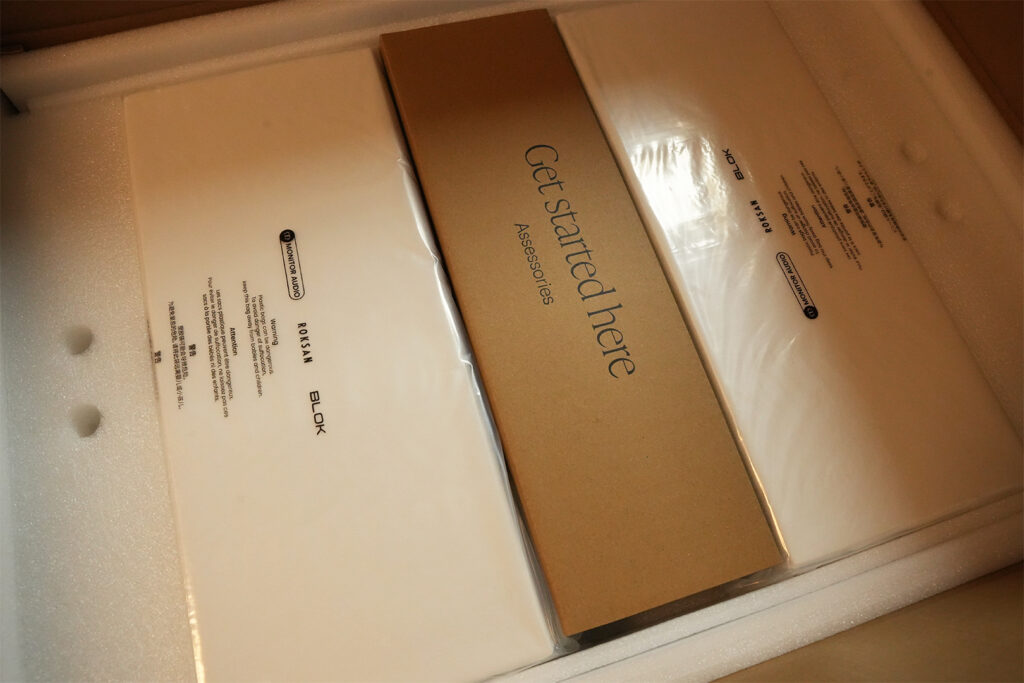
Unboxing our Stax 2G and I breathed a sigh of relief, as everything is well packaged and presented
We opted for a three tier package, comprised of a base, 220mm and 170mm tiers. As a time-poor hifi reviewer I was quietly dreading an Ikea like experience of confusing instructions and fiddly fittings, but how wrong I was. Right from opening the box, it’s obvious that this has been designed by a company that knows a thing or two about how to make life easy for its customers, with a professional approach to packaging and assembly that could teach most furniture manufacturers a lesson or two.
A proper tool
Starting with the base unit, which is the most ‘complicated’ element, owing to it having coned feet to also attach to its side cheeks, although in reality, it isn’t complicated at all to put together. Everything is pre-drilled with threaded holes for attaching the included height-adjustable floor spikes and the bolts that secure the shelf at each of its four corners.

Base shelf ready for assembly, including spikes, cups, bolts and adjustment tools
The kit includes two bespoke tools to make life easy, comprised of a large circular plastic ‘horseshoe’ spike height adjustment tool and a T-bar to tighten the bolt heads which pass through the shelves. It’s the little details too that really impresses me, like the T-bar’s magnetic yet padded underside, to prevent it scratching the polished bolt heads.
My minor bugbear though is with the included spike cups to protect solid floors (like mine). As the metal surface on their underside can still cause marks, but a few quids’ worth of furniture pads will help prevent this. They’re also magnetic to help them stay in contact with their corresponding cone foot, but I’d welcome a slight indentation at their centre to make sure each cone sits bang in the middle of each cup for an ideal alignment.

Up close with one of the Stax 2G base’s adjustable cone feet, which are easy to use thanks to the large horseshoe adjuster tool (background of shot)
Once the base has been built you’re now ready to add each tier, which is simply a case of screwing their corner bolts on and placing it on top of the tier below.
To aid alignment and damping, each side flank has a thick silicone rubber layer on its underside, chosen for its acoustic properties, with circular recesses that precisely align with the bolt heads of the shelf below. These side panels are hollow, formed from MDF and offer a removable bung should you want to mass load them with an inert acoustic material of your choosing.
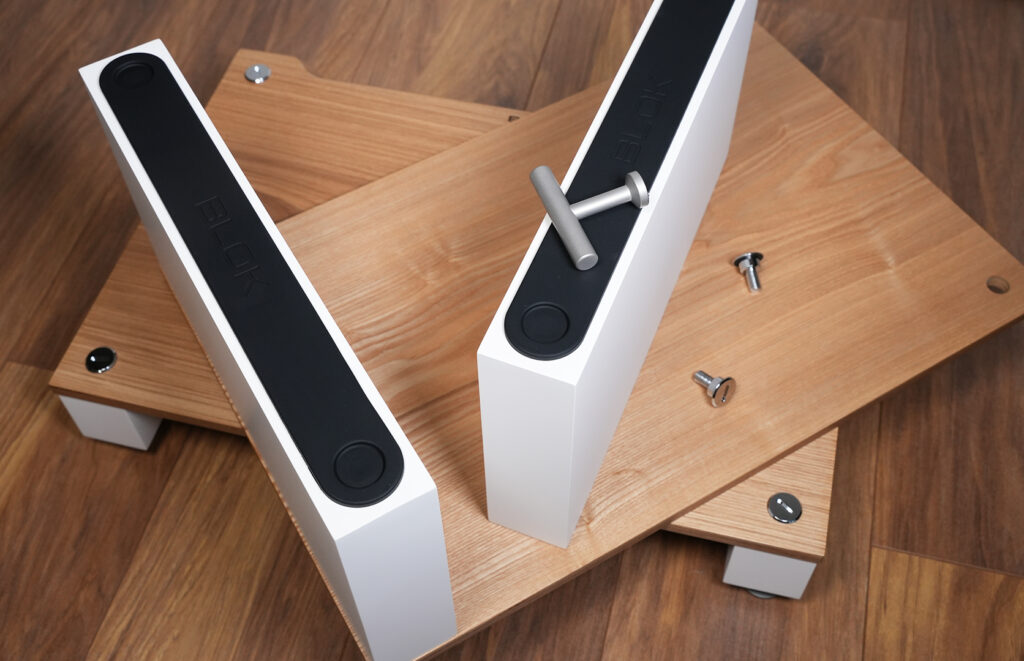
Underside of the Stax 2G side panels shows their rubber foot and recessed locating guides
To add the remaining shelves simply bolt on the side panels and away you go, making for a total assembly time of around 45mins tops. All that’s left to do is add your kit and away you go.

Stax’s T-bar tightening tool in action, magnetically attached to a corner bolt. Like me some users may want all the slotted heads to line up, but care must be taken not to over-tighten
Performance
For us this meant Roksan’s latest Caspian 4G amplifier which we recently reviewed, an SME 20/2 turntable with AVID Nexus tonearm and Primare NP30 DAC/network player, driving Dynaudio Evoke 50 loudspeakers.
Adding your kit is easy enough, as you can either slot it in a fully built Stax 2G or add it as you go with each tier you build. The three optional height sizes will cover most hifi, but it’s worth noting that the Stax 2G’s footprint at 603 x 403mm (WD) is relatively compact, and oversized gear beyond 470mm wide (due to the thickness of the side supports) won’t fit. My reference Michi X5 integrated at 475mm for example is too wide, and even if it did fit width ways, it would require the ‘LP’ tier for its height and ventilation needs. Although at 44kg, it’s also over the 40kg max weight per tier that Blok recommends.
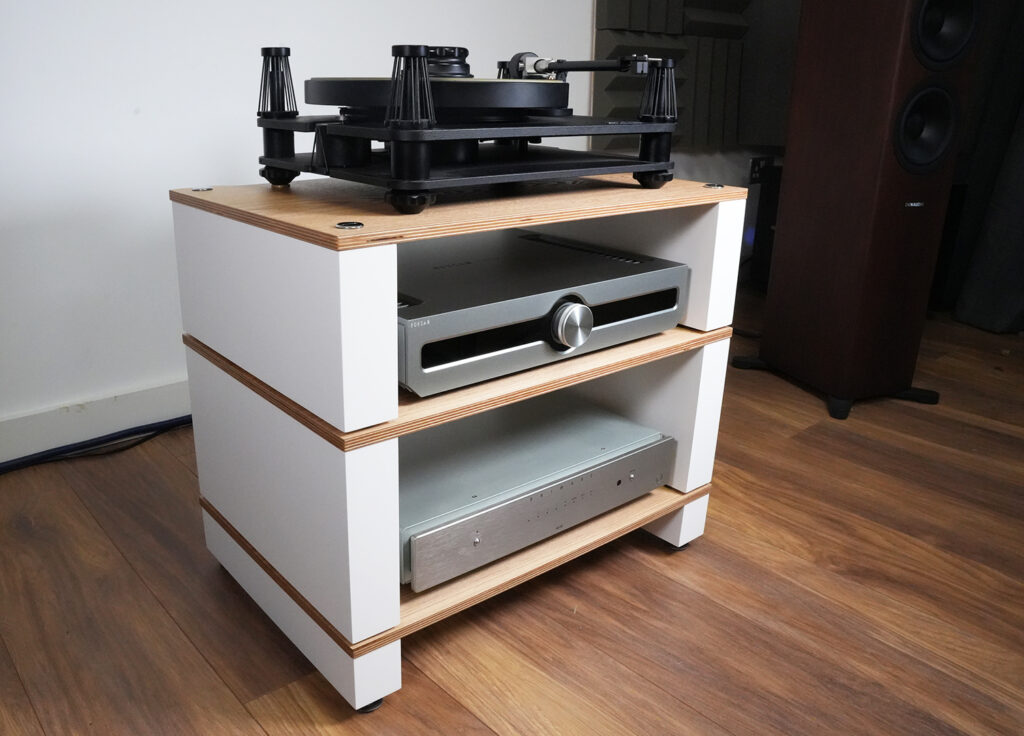
SME, Roksan and Primare brought together on our Stax 2G
When testing an equipment support and if/how it impacts the sound of a system, I always focus on the turntable, as in my experience, this is the source component that is affected the most by what it’s cited upon.
And while my SME boasts expertly engineered levels of isolation within its suspended design, I’ve yet to find a turntable (included suspended designs) that don’t benefit from riding on a good quality equipment support.
Spinning London Grammar’s latest The Greatest Love LP highlights how the SME is being given a solid stage on which to perform. The music sounds full of detail, with rich layers of deep textures to get lost in. And its this soundstage depth that tells the real story, as popping this turntable on a less than adequate or average system support and the soundstage quickly compresses front to back, sounding thin at the extremes. But aboard the Stax 2G, there’s a sure-footed confidence in the delivery I’m hearing.
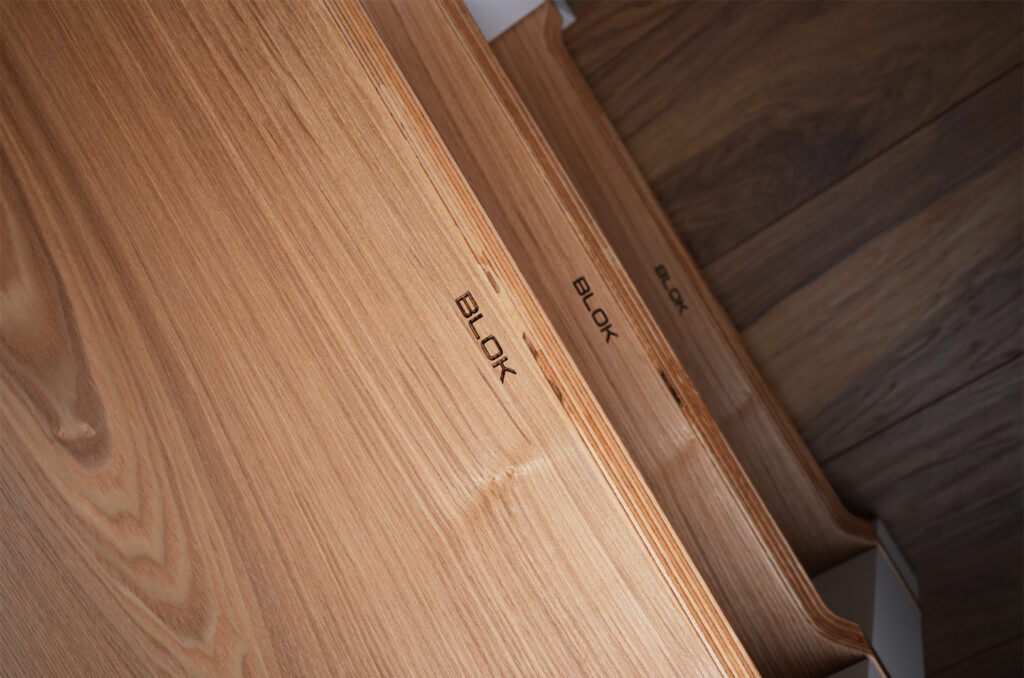
Recessed cutouts on the rear shelves allow for cables to pass behind with the unit snug against a rear wall
And then there’s the bass. Via the Roskan the music has punch and a lithe demeamor as our recent review revealed, and with the Stax 2G backing things up its the sheer scale and reassuring weightiness to it that gets my head confidently nodding along.
The melodic plucking of Aston Barrett’s restrained bass notes on No More Trouble from Bob Marley and the Wailers’ Catch A Fire LP have just the right amount of power, articulation and stop/start accuracy to have you eagerly anticipating each note. These notes sound firm too, compared to the flabby delivery I’ve heard with this track on less well set up vinyl rigs and equipment supports.
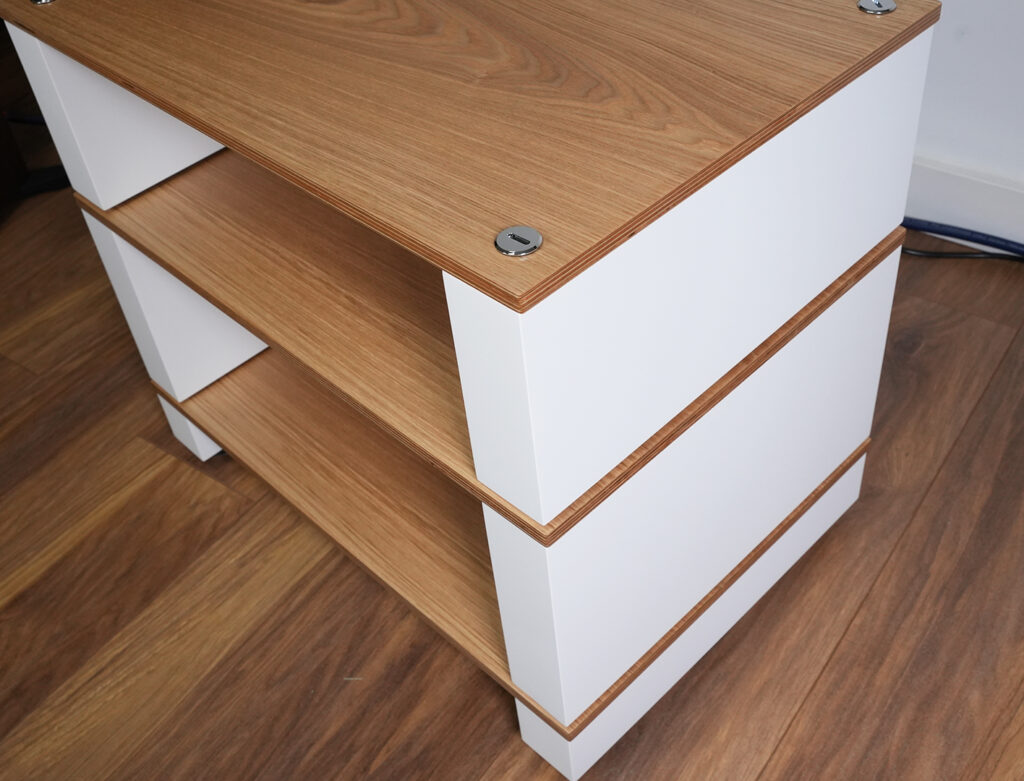
Nice to look at from every angle, the Stax 2G is well made, with ply being chosen for its strength to thickness ratio
Finishing off with the reggae infused funk of Devon Sproule’s The Unmarked Animals from her stunning 2011 LP I Love You, Go Easy (which also has one of the best album cover images ever committed to a 12″ cardboard), and my system sounds so on song it’s hard not to smile at the sonic platform the Stax 2G provides each piece of kit to perform on. Rhythms sound organic and excellently paced, with instruments clearly imaged and articulated, making the Stax 2G a sound investment.
In summary
It’s hard not to be anything than highly impressed with the Blok Stax 2G. It’s easy to assembly, delightfully made and great value compared to many rivals.
The fit and finish is excellent (as we’ve come to expect from the Monitor Audio Group brand) and the versatility brought to it with its modular design makes it oh so easy to build upon, as your system and budget increases. Sonically it adds very little, which is exactly what you want and I wouldn’t hesitate in using this to host a mid to high-end system without worry.



